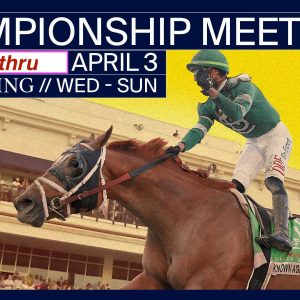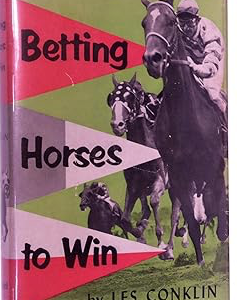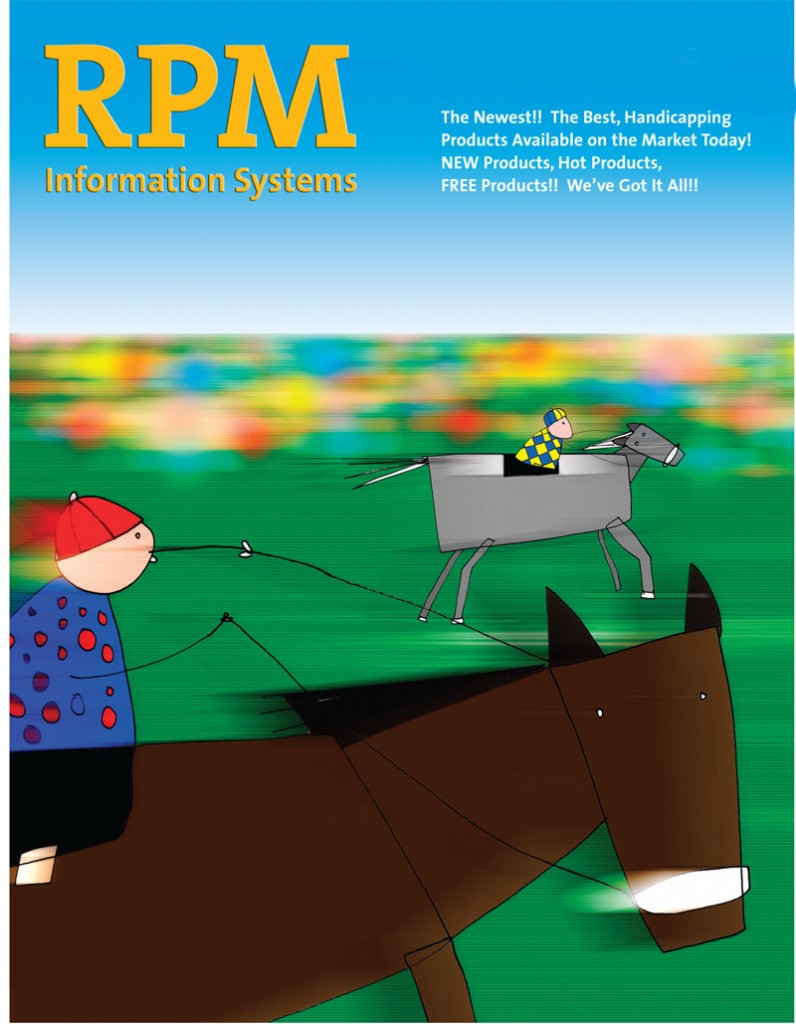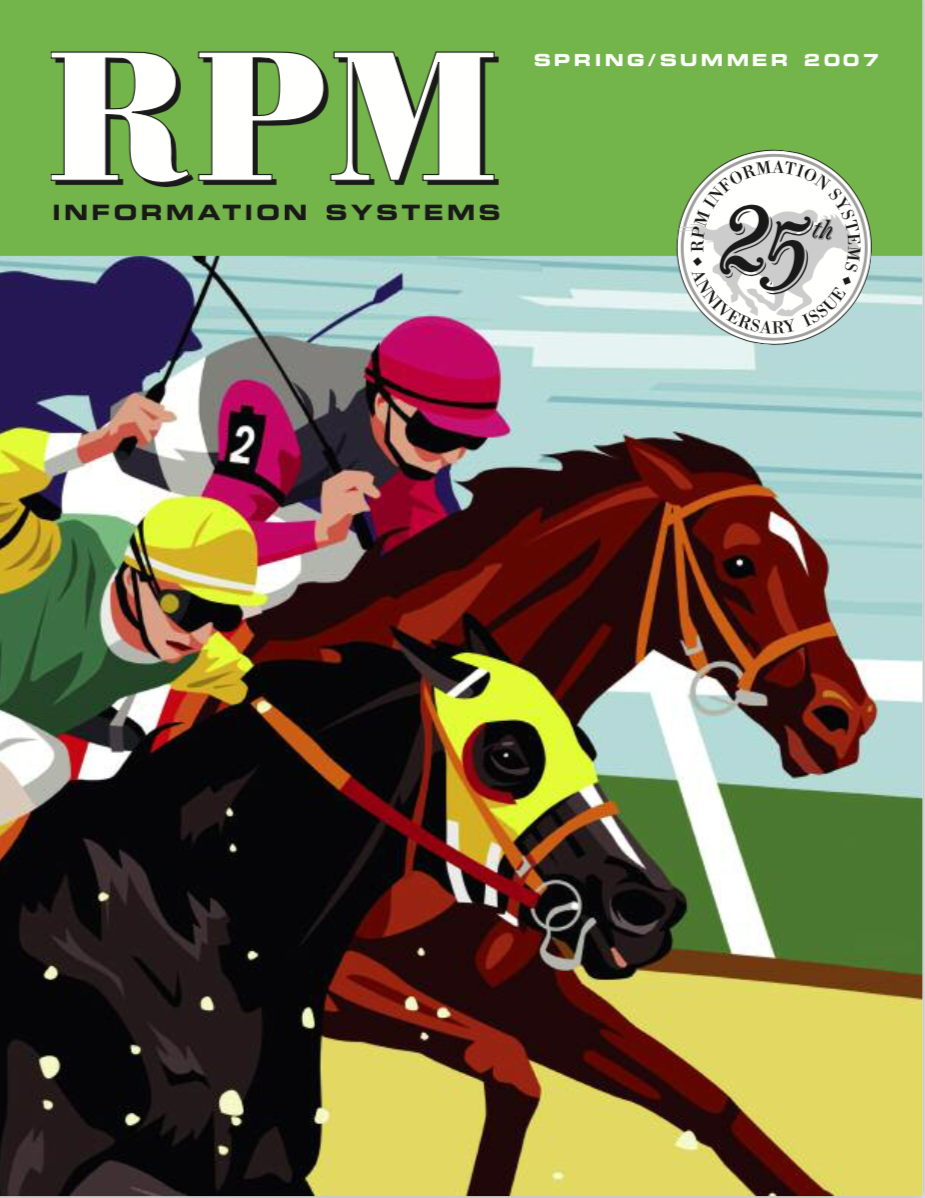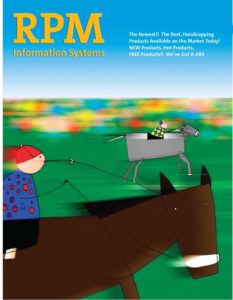Sale!

![img]()

3. Turn Time matters.
4. Jockeys matter.
5. Distance matters.
![img]()
![img]()

Original price was: $111.00.$88.88Current price is: $88.88.
Stalking the Speedy Starters!
What kind of running style wins the majority of North American races? Nope, not Lone Speed. To find out, read on:
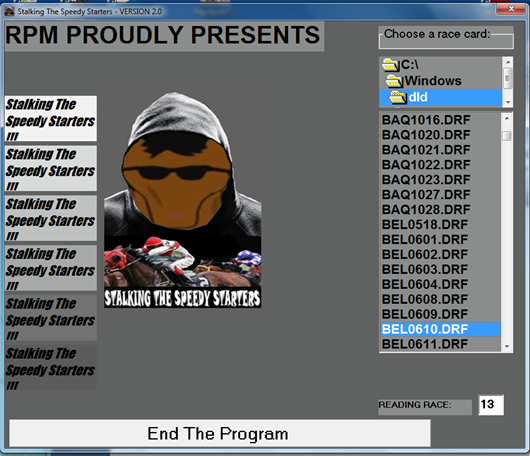
Description
Stalking the Speedy Starters!

📺SEE THE VIDEO CLICK HERE___

How many times has it happened to you? I’ll bet hundreds, if not thousands.
It happened to me just last Sunday at Santa Anita.
I loved a horse named Australian Mia in the 1st race. She had speed and drew into a paceless field. She was 7/1 as the gates opened. And she gets the 1st call, and the 2nd, and the 3rd.
In the stretch the track announcer screams ‘and Australian Mia is digging in, up by two lengths’ with just a furlong to go.
Damn, I’ve got it, I foolishly thought, as right at the wire not one, but two horses edge her out. She loses by two bobbing heads! So my $150 win/place bet, which would have returned @$1,800, returns ….. a big fat nothing!
We all know that speed is the name of this game, but speed doesn’t necessarily mean wire-to-wire winners.
In fact, only about 18% of races are won by horses who get the 1st call and then lead all the way to the wire.
Most races are won from off the pace, but not from far off the pace.
Horses within 2-1/2 lengths of the leader at the 2nd call win the vast majority of races in the U.S.
These are your pace-pressers, better known as STALKERS.
They stalk the early leader(s) and roll late, often getting up in the last couple of jumps.
I remember having five straight winners in the Pick 6 at Del Mar once, with the payout to either of the horses I had in the last leg in the $24,000 range, and just as in the situation above, one of my horses was two lengths clear in deep stretch when this other runner ….. I’ll never forget his name: it was Tough Break, believe it or not, flew in the final strides to get up by a nose.
Isn’t it funny how we horseplayers seem to remember the agonizing losses in big money situations better than our actual large scores.
But identifying Stalkers is not easy, as there are often two or more in any given race.
Ahh, but what if we had some assistance, especially of the ‘computer’ variety, to help identify the stalker(s) likeliest to be bearing down late, and winning or finishing in the money.
👉Well, we’re in luck because our programmer, Len Cz, is introducing his newest, which he calls ‘Stalking the Speedy Starters!’, a program that focuses on the horses with superior ‘stalking’ capabilities.
👉👉And, since close to 68% of all races at distances of 6 Furlongs and longer are won by Stalkers, well, you will be cashing in much, much more frequently! Let’s examine some more details:
-
1. While it has long been known that most races are won by horses coming from just off the pace, there has never been a super accurate way to identify these animals.
-
2. The reason for this is that at times there are several likely ‘stalkers’ in a race. The closest we have seen to solving this puzzle came from Tom Brohamer, of Pace Makes the Race fame.
-
His suggested method was very complex, however, requiring comparing Par Times for each distance, and each call, among several other factors. While effective, doing the calculations longhand would easily take 30 minutes or so per race.

3. Turn Time matters.  Len was able to cross reference times for each track and from track to track to satisfy the first part of Brohamer’s theory.
Len was able to cross reference times for each track and from track to track to satisfy the first part of Brohamer’s theory.
But Len found that the superior stalkers also had superior Turn Time numbers.
‘This is what really broke the ice.’ Len tells us. ‘I found that when Turn Time was considered along with Par Race times in the algorithm I developed, it often, very often, focused on a horse(s) that, barring trouble, would be making that stalking move on or coming off of the far turn. And with just a bit more fine tuning, most of these runners would at least hit the board.’
4. Jockeys matter. 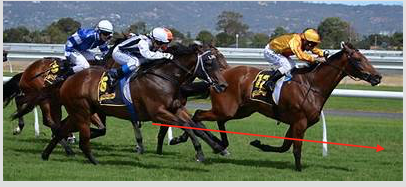 Of course, the man or woman who is doing the ‘stalking’, i.e., the jockey, matters a whole lot.
Of course, the man or woman who is doing the ‘stalking’, i.e., the jockey, matters a whole lot.
Some riders are great at sprints where they just barrel out of the gate and go for it.
Others are more patient and wait for the pace to develop in front of them. 👉These are the guys and gals we want riding our contenders.
👉While it wasn’t easy, Len was able to match riding styles with various distances at various tracks and, using point values, found the riders who frequently, often very frequently, won or got very close with a ‘stalking’ move.
‘These are riders who really have a ‘feel’ the shape of the race,’ Len says, ‘and their part in guiding these horses, in having them in the right spot at the right time, cannot be overemphasized.’
5. Distance matters.  The most common distances where wire to wire winners often prevail is between 4 furlongs and 5.5 furlongs.
The most common distances where wire to wire winners often prevail is between 4 furlongs and 5.5 furlongs.
👉👉But the percentage of gate to wire winners steadily decrease as the distances increase. Once you get to 6.5 furlongs and longer, stalkers enjoy an enormous advantage.
“I love the way you guys continue to innovate since there just plain isn’t anyone else out there doing the same thing. You may not realize it, though you probably do, but the information in the TOTAL column alone is worth many times what you are charging. Here you get a complete picture of how many lengths a runner gained or lost in their last few races. Over and over again horses with big positive numbers win or finish in the Exacta or Trifecta while those with negative numbers in that column, the horses that have lost lengths over the past few starts, invariably fade out of the picture, unless they are taking a big drop in class. This is one of the greatest tools ever for the serious handicapper. Thanks,” Dale Arnett, Louisville, KY
“These stalkers are the horses that often blow up your Exactas, Tris, Supers, etc., as they are easy to overlook and they often roll into the picture late and often at solid prices. Knowing who the strong Stalker types are will definitely help you improve your overall hit rate and profits on the vertical exotics. I’ve noticed that in big fields the pricier Stalkers the program picks are in the Trifecta or Superfecta close to 50% of the time.” Bob McClaren, Houston, TX
Screenshots

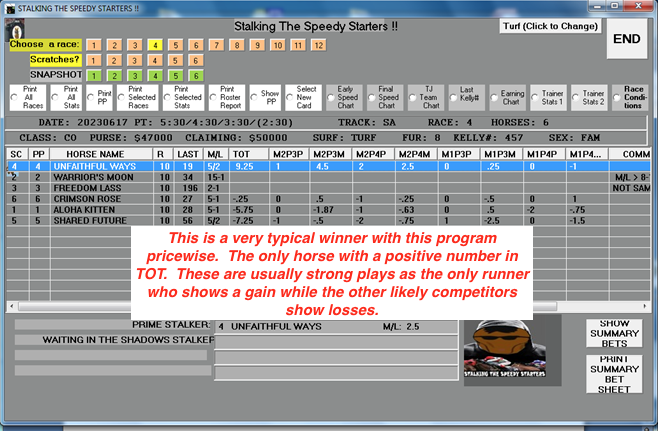
Take a look at this day at Santa Anita. While getting more winners than average, it shows you the capability of the program. You will have many days where most of the plays will hit the board. Note also some of the nice place prices from horses that finished 2nd – you will get a lot of these.
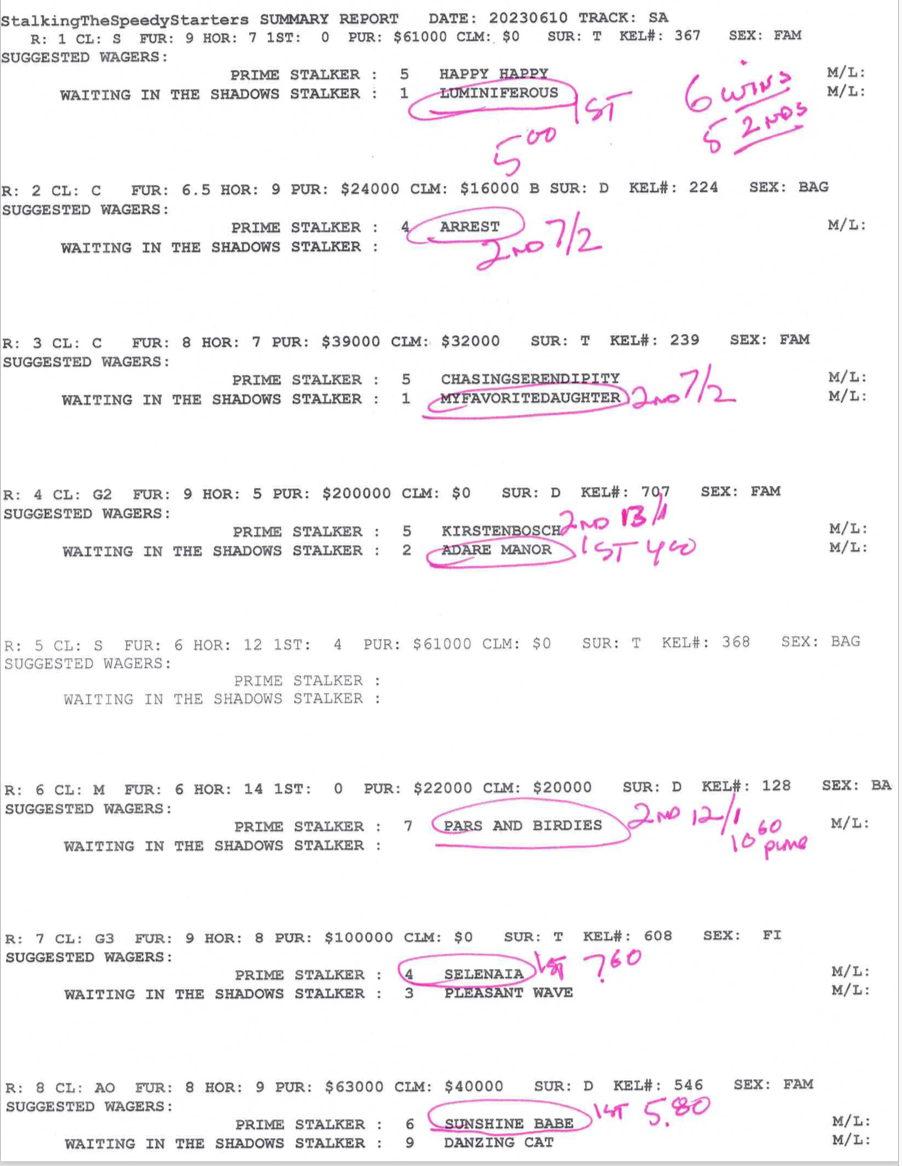

And how does the program fare on BIG race days, where a lot of quality races are carded?
One of the reasons this program really smokes on big race days is likely because of the quality of the jockey colony, i.e., they are excellent ‘tactical’ riders and are super good at ‘rating’ their mounts.

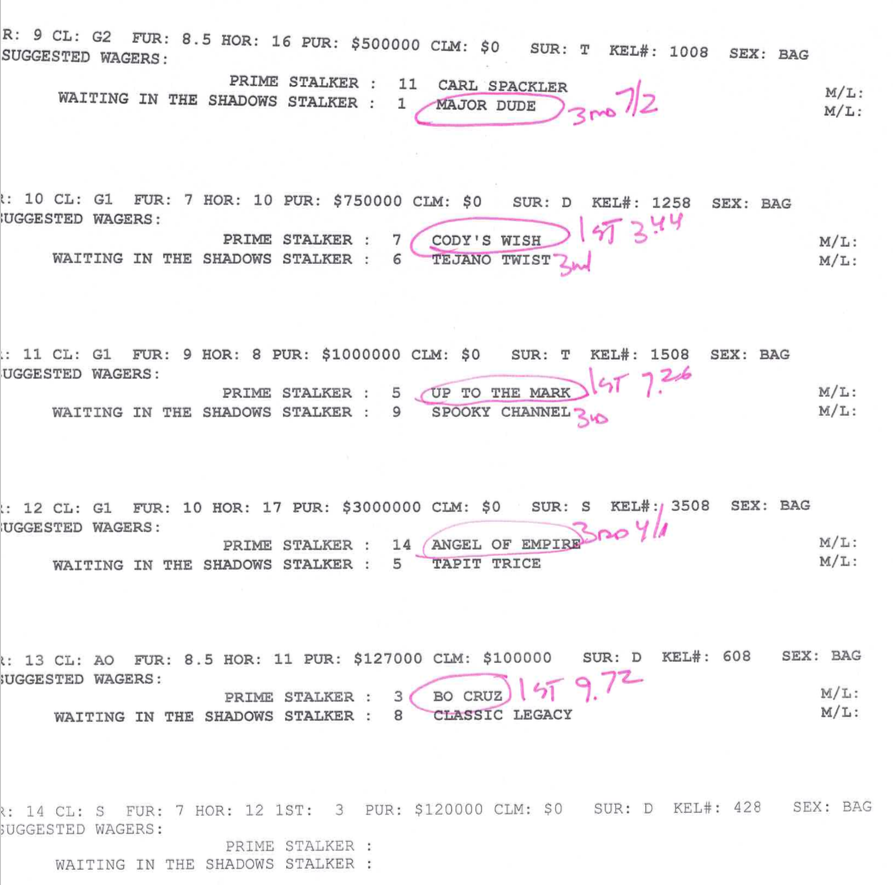
Playing to place and show can also be lucrative with this program, especially the place where nice prices often run up into 2nd.
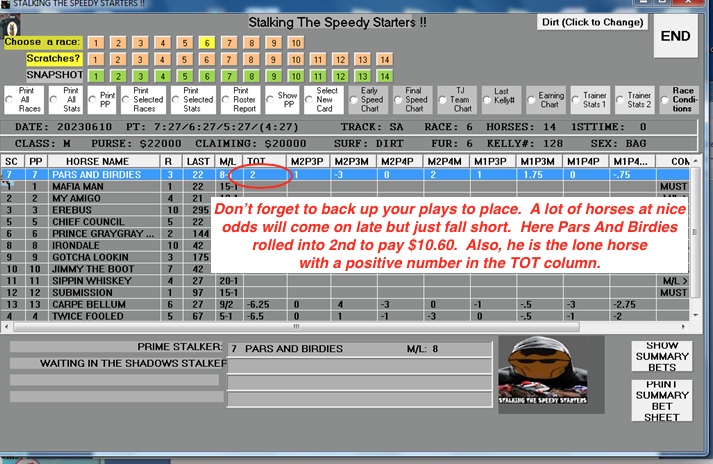
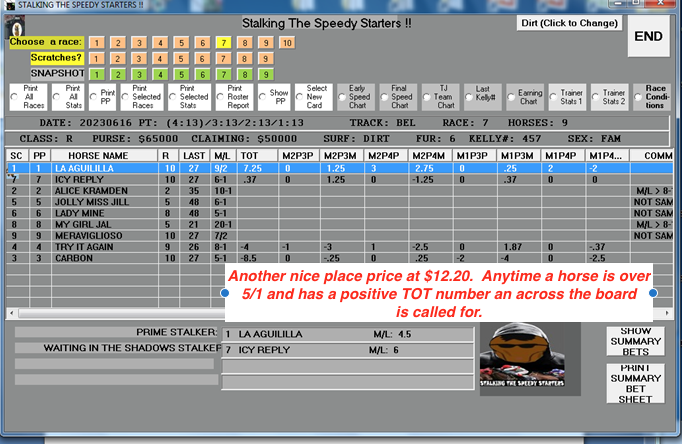


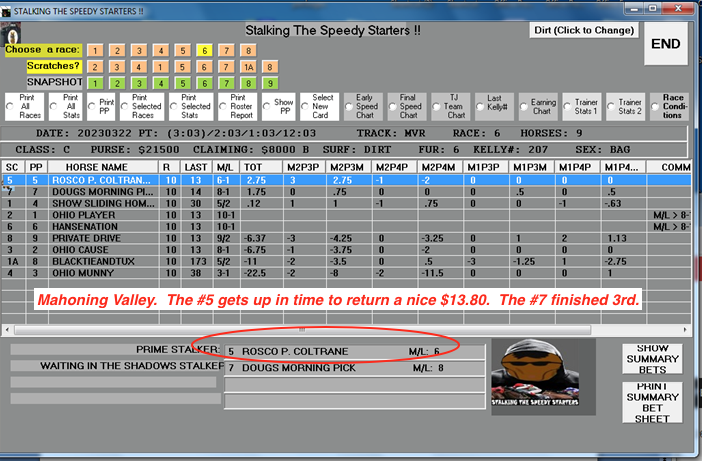
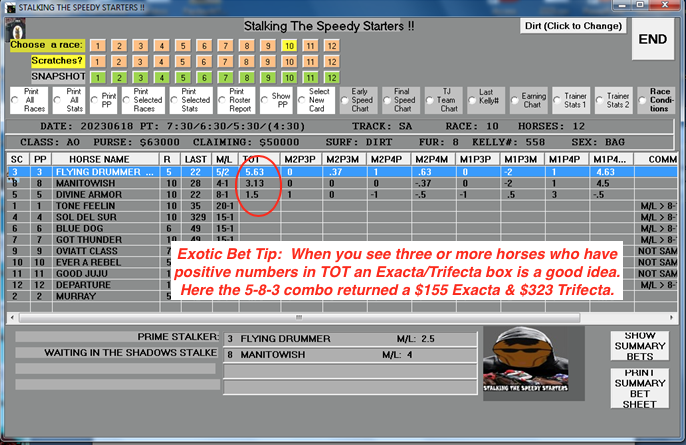


Q&A
Q. Does the software provide a play in every race?
A. No. On average, @60% of the races will have a play as the software only promotes situations where it is relatively sure that there is at least one solid Stalker in the race.
Q. Are there situations that I should avoid?
A. Yes. Races carded between 4 furlongs and 5.5 furlongs, especially in small fields, are not productive. Races at 6F and longer produce the best results. And one distance, 7F, produces the best overall results. This is a distance that is very, very hard to go wire to wire at, and Stalkers win close to 79% of races at this distance. Also, races carded at longer than 10 furlongs, which are rarely run, were not productive.
Q. What do the various columns mean?
A. That is all explained in the manual, but basically these columns are measuring gains/and or losses in lengths at different points in previous races. A positive figure in the TOT column means the horse normally gains lengths during the final four furlongs; a negative figure means the horse normally loses ground in the late going.
Q. What situations play the best?
A. Whenever you see a horse in the TOT column who is the only horse with a positive number, or who has a 3 or more point advantage over the second highest scorer, these are your strongest prospects at all distances. When two horses are present in the boxes below and both are at odds of 5/1 or higher, a great strategy is to play both to win and place and box them in an Exacta with the race favorite. When two horses are present and one is 5/1 or higher on the morning line and the other shorter, an across the board wager is best on the longer price is best, with the emphasis on the place and show.
And, remember, it is still wise to include the likely front runners in your exotics, as they will often hit the board, and likely along with one of the Stalkers.
Also, your best opportunities and prices will come in races with 7 or more entrants, and overall the best results came at ‘larger’ tracks, especially on the New York, California, Kentucky and Florida circuits.
So now you have access to a software program that focuses on horses who win the vast majority of races in North America, year in and year out: The Stalkers.
Now, instead of watching your front runner choke nearing the wire, you have a good chance to have the horse that passed him late.
This is an extremely solid winner and on the board-getter, and you will see several cards where most of the selections hit the board.
And, considering the amount of program and detail that went into this program, we feel that the $111.00 retail price is very reasonable.
So Call us at 1-800-696-0067 or order from our website, and be sure to watch the Video (access above). Thanks, and Happy Summer Racing Season!
$111.00 $88.88


